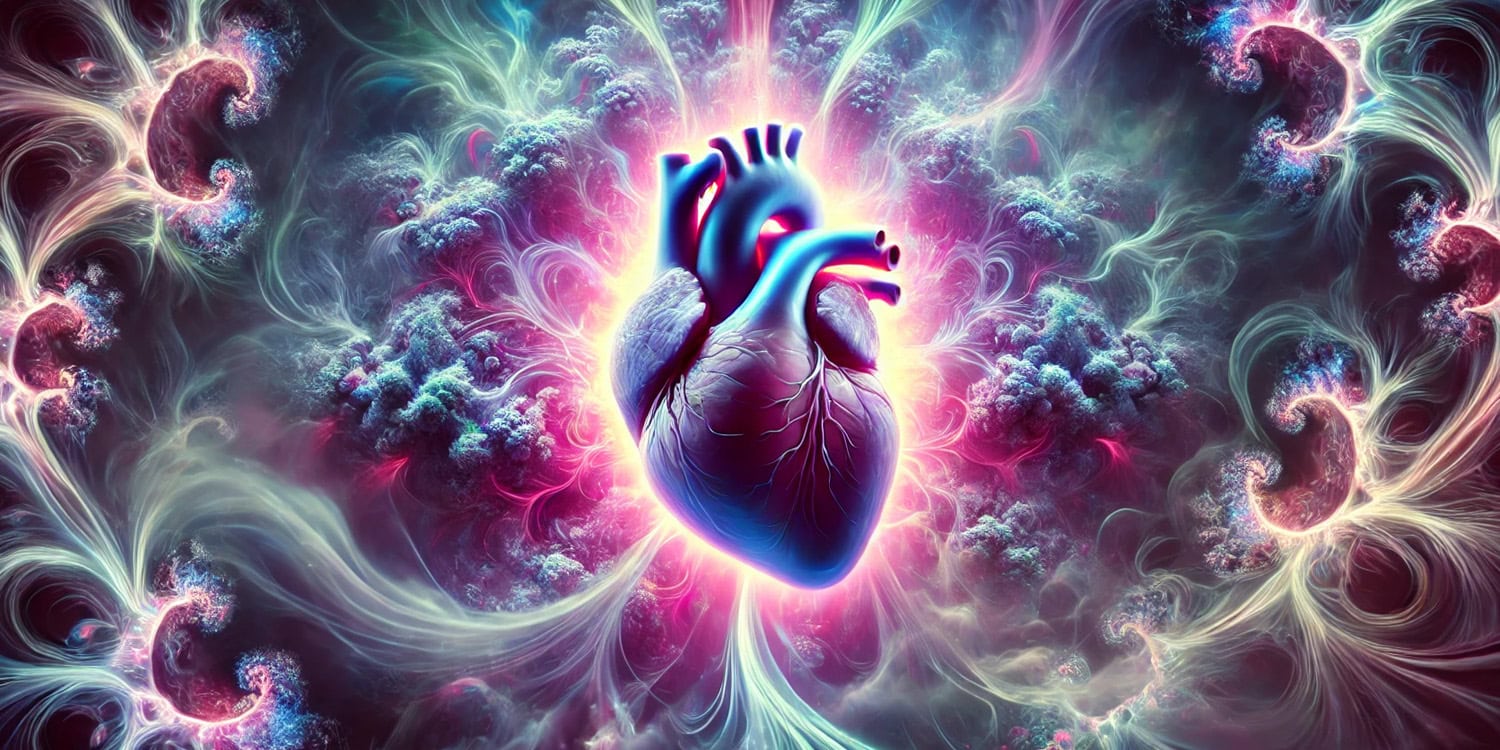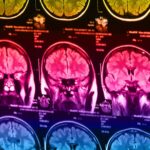A new study published in the Journal of Psychopharmacology reveals a surprising link between mystical experiences induced by the psychedelic compound DMT and specific patterns of heart activity. Researchers found that a unique balance between the body’s sympathetic and parasympathetic nervous systems during the DMT experience was associated with participants’ reports of spiritual insights during the “trip” and improved well-being weeks later. These findings suggest that the body’s physiological responses play a key role in shaping the profound psychological effects of psychedelics.
DMT (N,N-Dimethyltryptamine) is a powerful, short-acting psychedelic known for inducing intense, non-ordinary states of consciousness. It occurs naturally in various plants and animals, including humans, and can be consumed through various methods to produce profound, fast-acting effects that last about 10 to 15 minutes.
Users of DMT often report vivid hallucinations, feelings of oneness with the universe, and deep spiritual or mystical experiences. These profound moments are often described as “peak experiences,” characterized by a sense of transcendence, intense joy, and lasting psychological insight. These experiences have been linked to therapeutic benefits, particularly for individuals undergoing treatment for conditions like depression or anxiety.
While the psychological effects of psychedelics have been studied extensively, relatively little is known about how the body, particularly the autonomic nervous system, is involved in these experiences. The autonomic nervous system regulates many of the body’s involuntary functions, including heart rate and stress responses. Given that emotions and physical sensations are closely linked, the researchers aimed to explore how shifts in autonomic nervous system activity during DMT administration might relate to subjective experiences of spirituality and insightfulness.
“As a neuroscientist, I spent most of my scientific career focusing on the brain, which I believed held the key to our consciousness and its non-ordinary states,” said study author Valérie Bonnelle, an independent researcher who received a PhD in cognitive neuroscience from Imperial College London.
“In 2018, I volunteered for a psilocybin study at King’s College, and during the experience, it felt as if my awareness was no longer emerging from my brain, but from my heart. I started exploring what we know about the involvement of the heart in consciousness, and this led me on a fascinating journey where I came to realize that the body, beyond the brain, may greatly contribute to the quality and intensity of our emotional experiences and our state of consciousness.”
“Most psychedelic research has focused on the brain, but I became increasingly convinced that we were overlooking something crucial. This idea was reinforced by the growing field of somatic therapy and the way psychedelics seem to help reconnect people’s minds with their bodies.”
The study involved 17 healthy participants, 11 of whom were men, with an average age of 33.8 years. These individuals participated in a controlled trial where they received either DMT or a placebo. Electrocardiograms were used to monitor their heart activity throughout the experiment, allowing the researchers to measure the influence of the sympathetic and parasympathetic branches of the autonomic nervous system.
The sympathetic nervous system is responsible for preparing the body for action in stressful situations—commonly known as the “fight-or-flight” response—while the parasympathetic nervous system works to calm the body after stress, promoting relaxation and recovery. Using electrocardiogram data, the researchers tracked how these two systems influenced heart activity before, during, and after DMT administration.
The participants also completed questionnaires during and after their DMT sessions, including an altered states of consciousness scale that measured dimensions like spiritual experience, insightfulness, and feelings of unity. Two weeks after the sessions, participants were also asked to report on their overall sense of well-being using a standardized well-being questionnaire.
The study revealed interesting relationships between heart activity and participants’ subjective experiences. During the peak of the DMT experience, there was a unique pattern of coactivation between the sympathetic and parasympathetic nervous systems—both systems were simultaneously active, which is unusual.
This state of “sympathovagal coactivation” was strongly linked to participants’ reports of spiritual and insightful experiences during their DMT session. In other words, when the body experienced this rare balance between stress responses and relaxation, individuals were more likely to report having profound, mystical experiences.
Additionally, the researchers found that the balance between the sympathetic and parasympathetic systems before DMT was administered could predict the intensity of these experiences. Participants who had a more balanced autonomic state before the DMT injection were more likely to have insightful and spiritual experiences during the session. This balance at baseline also predicted how strongly the two systems coactivated later during the experience.
Perhaps most notably, the study found that the degree of sympathovagal coactivation during the DMT session was linked to improvements in participants’ well-being two weeks later. Those who experienced this coactivation during their DMT session reported higher well-being scores at the follow-up assessment, suggesting that this physiological state might play a role in the long-term positive effects of the psychedelic experience.
“In essence, DMT-induced ‘mystical’ experiences appear to manifest in the body as an unusual state of coactivation of cardiac sympathetic and parasympathetic activity,” Bonnelle said. “Not only was this paradoxical physiological state of peaceful activation strongly related to spiritual and insightful experiences, but it was also predictive of well-being improvement after the experience. Our results also suggest that practices that promote the cultivation of balance between the two branches of the autonomic nervous system may facilitate the occurrence of such a state.”
Bonnelle was surprised to find that lower sympathetic activation during DMT experiences was linked to more challenging outcomes, contrary to the expectation that a higher stress response (sympathetic activity) would lead to more anxious experiences.
“I was expecting that higher levels of sympathetic activity during the experience (associated with the fight-or-flight stress response) would be associated with more anxiogenic experiences, as is normally the case in a ‘normal’ state, but results actually showed the opposite,” Bonnelle told PsyPost. “This warrants further research, but one possible interpretation is that people who resist the experience (due to fear of losing control or other traumatic blockages) fail to fully engage their stress response during the initial phase of the DMT trip, and therefore experience incomplete trips, stuck between two states of consciousness—no longer in a ‘normal’ state, but not fully in the ego-dissolved state either.”
“This in-between state might be very uncomfortable, as the ego is still clinging for control, triggering fear responses. DMT has a very abrupt onset that might be too intense for some individuals, and more research should be conducted to try to predict who is ready for such experiences, possibly based on the state of their autonomic nervous system.”
Bonnelle emphasized that while challenging experiences shouldn’t always be avoided, some individuals may require more preparation before using powerful psychedelic compounds like DMT.
“It’s possible that for some individuals, much more preparatory work might be needed to overcome this mental and physiological brake that typically results in unpleasant experiences,” Bonnelle said. “Although this will have to be researched much more thoroughly, I suspect that for some people with deeply rooted trauma, this stress brake (which may have developed as a protective shield) may be so strong that compounds triggering a steep stress response, such as DMT or 5-MeO-DMT, may not be appropriate, as they are more likely to hit the ‘alarm’ button.”
While the study provides important new insights into the physiological mechanisms associated with psychedelic experiences, it also has some limitations. One major limitation is the small sample size of only 17 participants, which may not capture the full range of variability in how people respond to DMT. Additionally, the study only examined heart function as a measure of autonomic nervous system activity. Future research could benefit from incorporating other physiological measures, such as skin conductance or brain activity, to create a more comprehensive picture of how the body and brain work together during a psychedelic experience.
Future research could also explore whether techniques like meditation or breathwork, which are known to influence autonomic nervous system balance, could enhance the effects of psychedelics or help prepare individuals for a more positive experience. If baseline autonomic balance can predict the quality of a psychedelic experience, as this study suggests, there may be ways to train or optimize individuals’ physiological states to improve the safety and efficacy of psychedelic-assisted therapy.
“I’m interested in continuing research into how certain beneficial bodily states can be conducive to expanded states of awareness, and how these bodily states may be influenced and guided,” Bonnelle said. “This knowledge has been intuitively applied for millennia through yogic practices, but science is only beginning to scratch the surface. My next journey is taking me toward VR contemplative experiences and the possible use of biofeedback to project important physiological measures into the VR environment that contribute to our level and quality of presence.”
“I was supported by the Beckley Foundation for the DMT study, but I am now working as an independent researcher, currently collaborating with the Intangible Realities Lab on a project aimed at fostering connectedness and insight through guided group VR meditations for individuals suffering from existential distress due to a life-threatening illness,” she added.
“I’ve always been convinced that we can induce our own expanded states of consciousness without drugs or decades of meditation practice, and there are several practices (e.g., involving breath, sound, sensory deprivation) that confirm this, but they remain under-researched and poorly understood. This limits their clinical deployment and wider use for achieving more flourishing human experiences. ‘Thinking outside the brain’ seems to be a promising approach to scientifically address this uncharted territory and help bridge this gap.”
The study, “Autonomic nervous system activity correlates with peak experiences induced by DMT and predicts increases in well-being”, was authored by Valerie Bonnelle, Amanda Feilding, Fernando E. Rosas, David J. Nutt, Robin L. Carhart-Harris, and Christopher Timmermann.




